
The Shaolin Monastery, also known as the Shaolin Temple, is a Chan ("Zen") Buddhist temple in Dengfeng County, Henan Province, China. Believed to have been founded in the fifth century, the Shaolin Temple is the main temple of the Shaolin school of Buddhism to this day.
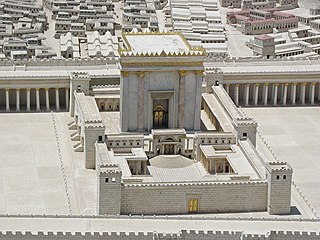
The Temple in Jerusalem was any of a series of structures which were located on the Temple Mount in the Old City of Jerusalem, the current site of the Dome of the Rock and Al-Aqsa Mosque. These successive temples stood at this location and functioned as a site of ancient Israelite and later Jewish worship. It is also called the Holy Temple.

A temple is a building reserved for religious or spiritual rituals and activities such as prayer and sacrifice. It is typically used for such buildings belonging to all faiths where a more specific term such as church, mosque or synagogue is not generally used in English. These include Hinduism, Buddhism, and Jainism among religions with many modern followers, as well as other ancient religions such as Ancient Egyptian religion.

The Temple Mount, known to Muslims as the Haram esh-Sharif and the Al Aqsa Compound, is a hill located in the Old City of Jerusalem that for thousands of years has been venerated as a holy site in Judaism, Christianity, and Islam alike.

The Second Temple was the Jewish holy temple which stood on the Temple Mount in Jerusalem during the Second Temple period, between 516 BCE and 70 CE. It replaced Solomon's Temple, which was destroyed by the Neo-Babylonian Empire in 586 BCE, when Jerusalem was conquered and part of the population of the Kingdom of Judah was taken into exile to Babylon.
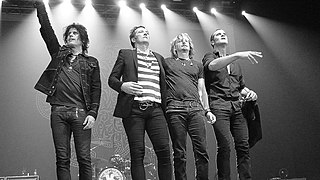
Stone Temple Pilots (STP) is an American rock band from San Diego that originally consisted of Scott Weiland, brothers Dean DeLeo (guitar) and Robert DeLeo, and Eric Kretz (drums). The band's line-up remained unchanged from its formation in 1989 until the firing of Weiland in February 2013. Linkin Park vocalist Chester Bennington joined the band in May 2013, but left amicably in November 2015. In 2016, the band launched an online audition for a new lead vocalist and announced Jeff Gutt as the new lead singer of the band on November 14, 2017.

Indiana Jones and the Temple of Doom is a 1984 American action-adventure film directed by Steven Spielberg. It is the second installment in the Indiana Jones franchise and a prequel to the 1981 film Raiders of the Lost Ark, featuring Harrison Ford reprising his role as the title character. After arriving in India, Indiana Jones is asked by desperate villagers to find a mystical stone and rescue their children from a Thuggee cult practicing child slavery, black magic and ritualistic human sacrifice in honor of the goddess Kali.

Angkor Wat is a temple complex in Cambodia and is the largest religious monument in the world, on a site measuring 162.6 hectares. Originally constructed as a Hindu temple dedicated to the god Vishnu for the Khmer Empire, it was gradually transformed into a Buddhist temple towards the end of the 12th century. It was built by the Khmer King Suryavarman II in the early 12th century in Yaśodharapura, the capital of the Khmer Empire, as his state temple and eventual mausoleum. Breaking from the Shaiva tradition of previous kings, Angkor Wat was instead dedicated to Vishnu. As the best-preserved temple at the site, it is the only one to have remained a significant religious centre since its foundation. The temple is at the top of the high classical style of Khmer architecture. It has become a symbol of Cambodia, appearing on its national flag, and it is the country's prime attraction for visitors.
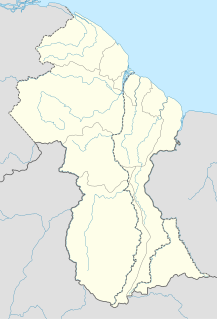
The Peoples Temple Agricultural Project, better known by its informal name "Jonestown", was a remote settlement established by the Peoples Temple, a cult under the leadership of Jim Jones, in Guyana Essequibo, a disputed territory in northwestern Guyana claimed by Venezuela.

James Warren Jones was an American preacher and faith healer turned cult leader who conspired with his inner circle to direct a mass murder-suicide of his followers in his jungle commune at Jonestown, Guyana. He launched the Peoples Temple in Indiana during the 1950s. Rev. Jones was ordained in 1957 by the Independent Assemblies of God and in 1964 by the Disciples of Christ. He moved his congregation to California in 1965 and gained notoriety with its activities in San Francisco in the 1970s. He then left the United States, bringing many members to a Guyana jungle commune.

Temple University is a public research university in Philadelphia, Pennsylvania. It was founded in 1884 by the Baptist minister Russell Conwell. On May 12, 1888, it was renamed the Temple College of Philadelphia. By 1907, the institution revised its institutional status and was incorporated as a university.

A portico is a porch leading to the entrance of a building, or extended as a colonnade, with a roof structure over a walkway, supported by columns or enclosed by walls. This idea was widely used in ancient Greece and has influenced many cultures, including most Western cultures.

Shirley Temple Black was an American actress, singer, dancer, businesswoman, and diplomat who was Hollywood's number one box-office draw as a child actress from 1935 to 1938. As an adult, she was named United States ambassador to Ghana and to Czechoslovakia, and also served as Chief of Protocol of the United States.
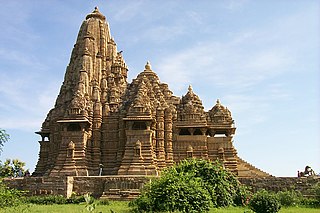
A Hindu temple is a symbolic house, seat and body of divinity. It is a structure designed to bring human beings and gods together, using symbolism to express the ideas and beliefs of Hinduism. The symbolism and structure of a Hindu temple are rooted in Vedic traditions, deploying circles and squares. It also represents recursion and equivalence of the macrocosm and the microcosm by astronomical numbers, and by "specific alignments related to the geography of the place and the presumed linkages of the deity and the patron". A temple incorporates all elements of Hindu cosmos—presenting the good, the evil and the human, as well as the elements of Hindu sense of cyclic time and the essence of life—symbolically presenting dharma, kama, artha, moksa, and karma.

The Shree Jagannath Temple of Puri is an important Hindu temple dedicated to Jagannath, a form of Vishnu, in Puri in the state of Odisha on the eastern coast of India. The present temple was rebuilt from the 10th century onwards, on the site of an earlier temple, and begun by King Anantavarman Chodaganga Deva, first of the Eastern Ganga dynasty.

Surya is a Sanskrit word that means the Sun. Synonyms of Surya in ancient Indian literature include Aditya, Arka, Bhanu, Savitr, Pushan, Ravi, Martanda, Mitra, Bhaskara and Vivasvan.
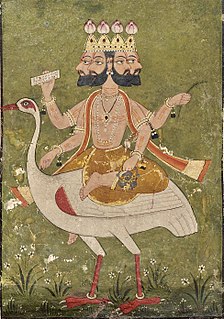
Brahma is the creator god in Hinduism. He is also known as Svayambhu (self-born) or the creative aspect of Vishnu, Vāgīśa, and the creator of the four Vedas, one from each of his mouths. Brahma is consort of Saraswati and he is the father of Four Kumaras, Narada, Daksha, Marichi and many more. Brahma is synonymous with the Vedic god Prajapati, he is also known as Vedanatha, Gyaneshwara, ChaturmukhaSvayambhu, etc, as well as linked to Kama and Hiranyagarbha. He is more prominently mentioned in the post-Vedic Hindu epics and the mythologies in the Puranas. In the epics, he is conflated with Purusha. Although Brahma is part of the Brahma-Vishnu-Shiva Trimurti, ancient Hindu scriptures mention multiple other trinities of gods or goddesses which do not include Brahma.

The Temple of Artemis or Artemision, also known less precisely as the Temple of Diana, was a Greek temple dedicated to an ancient, local form of the goddess Artemis. It was located in Ephesus. It was completely rebuilt twice, once after a devastating flood and three hundred years later after an act of arson, and in its final form was one of the Seven Wonders of the Ancient World. By 401 AD it had been ruined or destroyed. Only foundations and fragments of the last temple remain at the site.

According to the Hebrew Bible, Solomon's Temple, also known as the First Temple, was the Holy Temple in ancient Jerusalem before its destruction by Nebuchadnezzar II after the Siege of Jerusalem of 587 BCE. The period in which the First Temple presumably, or actually, stood in Jerusalem, is known in academic literature as the First Temple period.
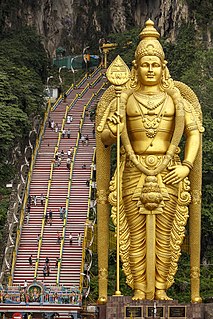
Kartikeya, also known as Skanda, Kumara,, Murugan and Subrahmanya, is the Hindu god of war. He is the son of Parvati and Shiva, brother of Ganesha, and a god whose life story has many versions in Hinduism. An important deity around South Asia since ancient times, Kartikeya is particularly popular and predominantly worshipped in South India, Sri Lanka, Singapore and Malaysia as Murugan.



















